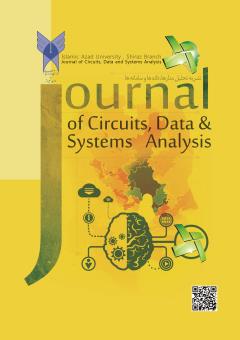تحلیل دادههای شرکتهای بازاریابی با استفاده از خوشهبندی K-Means بهبودیافته و مدل LRFMM2
الموضوعات :
1 - گروه مهندسی کامپیوتر، واحد تهران جنوب، دانشگاه آزاد اسلامی، تهران، ایران
2 - گروه مهندسی کامپیوتر، واحد مرودشت ،دانشگاه آزاد اسلامی ، مرودشت، ایران
الکلمات المفتاحية: خوشهبندی, k میانگین , بهینهسازی, بازاریابی, تحلیل,
ملخص المقالة :
خوشهبندی به ویژه k میانگین، یکی از مهمترین روشهای دادهکاوی است که در شناسایی و رصد رفتار مشتریان مورد استفاده قرار میگیرد. در k میانگین کلاسیک، بهینگی وابسته به انتخاب اولیه مراکز بوده و در نتیجه، این روش، بهینه نیست. مشکلات دیگر آن تعیین تعداد خوشهها و صفر شدن خوشهها است. در خوشهبندی مشتری، ویژگیهای رفتاری مشتری به عنوان روشی برای یافتن تعداد بهینه خوشهها و مقادیر اولیه مراکز خوشه برای دستیابی به نتایج دقیقتر و پیشبینی طول عمر مشتریان در نظر گرفته شده است. نتایج این پژوهش رفتار مشتریان هر یک از خوشهها را نشان میدهد و روش پیشنهادی بهبود یافته k میانگین یک بار با احتساب پارامتر M2 (میزان رضایت مشتریان) و یک بار بدون M2 با k میانگین کلاسیک مقایسه شده است. معیار اطلاعات متقابل نرمالیزه بر روی روش پیشنهادی و روش مورد مقایسه محاسبه شده و در هر دو حالت، با در نظر گرفتن یا فقدان شاخص M2، معیار اطلاعات متقابل نرمالیزه روش پیشنهادی بالاتر بوده است. همچنین شاخص رند تعدیل یافته برای حالت روش پیشنهادی با احساب پارامتر M2 بالاترین عدد را ثبت کرده است. روش پیشنهادی از نظر زمان محاسباتی نیز سریعتر از k میانگین کلاسیک بوده که نشان میدهد این روش عملکرد بهتری را از نظر سرعت و دقت عملکرد نسبت به k میانگین کلاسیک دارد.
[1] A. Alizadeh Zoeram and A. R. Karimi Mazidi, “New Approach for Customer Clustering by Integrating the LRFM Model and Fuzzy Inference System,” Iranian Journal of Management Studies, vol. 11, no. 2, pp. 351–378, Apr. 2018, doi: 10.22059/IJMS.2018.242528.672839.
[2] B. I. Nugroho, A. Rafhina, P. S. Ananda, and G. Gunawan, “Customer segmentation in sales transaction data using k-means clustering algorithm,” Journal of Intelligent Decision Support System, vol. 7, no. 2, pp. 130–136, Jun. 2024, doi: 10.35335/idss.v7i2.236.
[3] M. Sarkar, A. Roy Puja, and F. R. Chowdhury, “Optimizing Marketing Strategies with RFM Method and K-Means Clustering-Based AI Customer Segmentation Analysis,” Journal of business and management studies, Mar. 2024, doi: 10.32996/jbms.2024.6.2.5.
[4] H. Zare and S. Emadi, “Determination of Customer Satisfaction using Improved K-means algorithm,” vol. 24, no. 22, pp. 16947–16965, May 2020, doi: 10.1007/S00500-020-04988-4.
[5] M. Farhan and J. Heikal, “Used Car Customer Segmentation Using K-Means Clustering Model With SPSS Program: Case Study Caroline.Id,” Jurnal Indonesia Sosial Sains, Mar. 2024, doi: 10.59141/jiss.v5i03.1042.
[6] A. Rachwał et al., “Determining the Quality of a Dataset in Clustering Terms,” Applied Sciences, vol. 13, no. 5, p. 2942, Feb. 2023, doi: 10.3390/app13052942.
[7] T. Jiang and A. Tuzhilin, “Improving Personalization Solutions through Optimal Segmentation of Customer Bases,” IEEE Transactions on Knowledge and Data Engineering, vol. 21, no. 3, pp. 305–320, Mar. 2009, doi: 10.1109/TKDE.2008.163.
[8] S. Shah and M. Singh, "Comparison of a Time Efficient Modified K-mean Algorithm with K-Mean and K-Medoid Algorithm," 2012 International Conference on Communication Systems and Network Technologies, Rajkot, pp. 435-437, May, 2012, doi: 10.1109/CSNT.2012.100.
[9] Y. S. Cho and S. C. Moon, “Weighted Mining Frequent Pattern based Customer’s RFM Score for Personalized u-Commerce Recommendation System,” Journal of Convergence, vol. 4, no. 4, pp. 36–40, Dec. 2013.
[10] X. He and C. Li, "The Research and Application of Customer Segmentation on E-Commerce Websites," 2016 6th International Conference on Digital Home (ICDH), Guangzhou, China, 2016, pp. 203-208, doi: 10.1109/ICDH.2016.050.
[11] L. Zahrotun, "Implementation of data mining technique for customer relationship management (CRM) on online shop tokodiapers.com with fuzzy c-means clustering," 2017 2nd International conferences on Information Technology, Information Systems and Electrical Engineering (ICITISEE), Yogyakarta, Indonesia, pp. 299-303, Nov. 2017, doi: 10.1109/ICITISEE.2017.8285515.
[12] J. Hu, M. Li, E. Zhu, S. Wang, X. Liu and Y. Zhai, "Consensus Multiple Kernel K-Means Clustering With Late Fusion Alignment and Matrix-Induced Regularization," in IEEE Access, vol. 7, pp. 136322-136331, Sep. 2019, doi: 10.1109/ACCESS.2019.2940896.
[13] F. Khanizadeh, F. Khamesian, and A. Bahiraie, “Customer Segmentation for Life Insurance in Iran Using K-means Clustering,” International Journal of Nonlinear Analysis and Applications, vol. 12, pp. 633–642, Jan. 2021, doi: 10.22075/IJNAA.2021.22324.2350.
[14] P. Anitha, P. Anitha, and M. M. Patil, “RFM model for customer purchase behavior using K-Means algorithm,” Journal of King Saud University - Computer and Information Sciences, Dec. 2019, doi: 10.1016/J.JKSUCI.2019.12.011.
[15] J. Wang and X. Su, "An improved K-Means clustering algorithm," 2011 IEEE 3rd International Conference on Communication Software and Networks, Xi'an, China, May. 2011, pp. 44-46, doi: 10.1109/ICCSN.2011.6014384.
[16] L. Danon, A. Díaz-Guilera, J. Duch, and A. Arenas, “Comparing community structure identification,” Journal of Statistical Mechanics: Theory and Experiment, vol. 2005, no. 09, p. 09008, Sep. 2005, doi: 10.1088/1742-5468/2005/09/P09008.
[17] A. Amelio and C. Pizzuti, “Is Normalized Mutual Information a Fair Measure for Comparing Community Detection Methods?,” in Proceedings of the 2015 IEEE/ACM international conference on advances in social networks analysis and mining, pp. 1584–1585, Aug. 2015, doi: https://doi.org/10.1145/2808797.2809344.
[18] W. M. Rand, “Objective Criteria for the Evaluation of Clustering Methods,” Journal of the American Statistical Association, vol. 66, no. 336, pp. 846–850, Dec. 1971, doi: 10.1080/01621459.1971.10482356.


